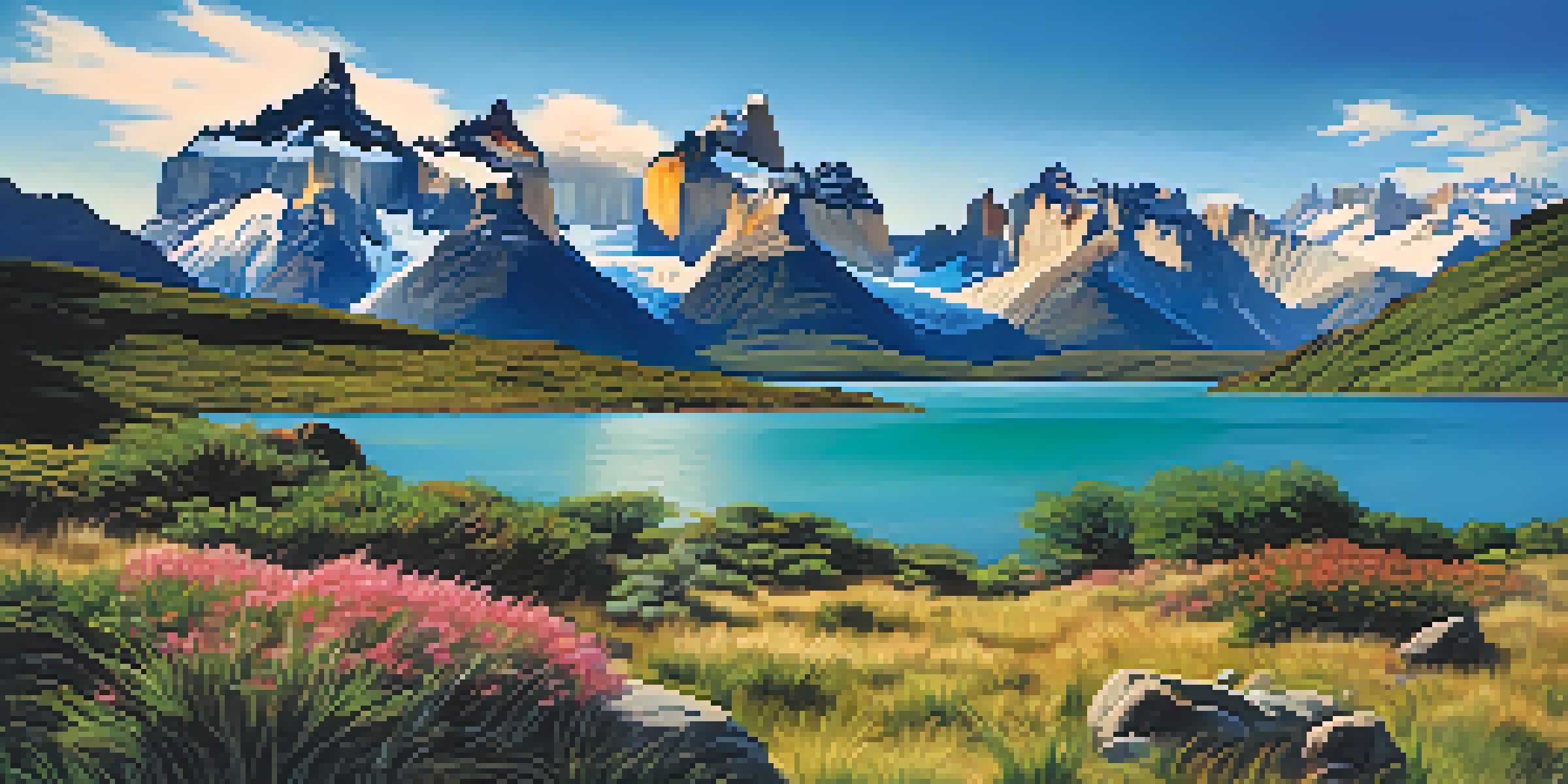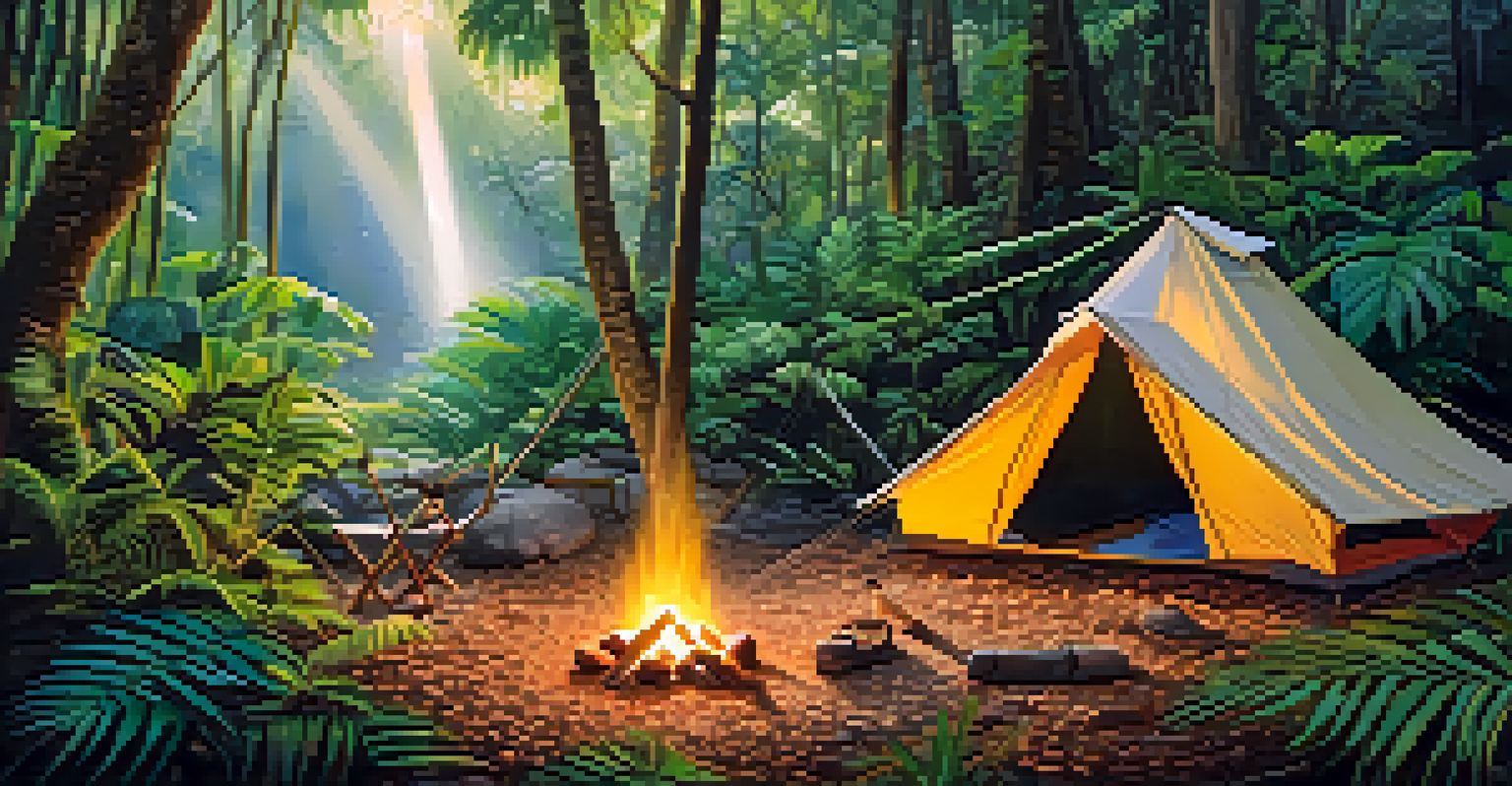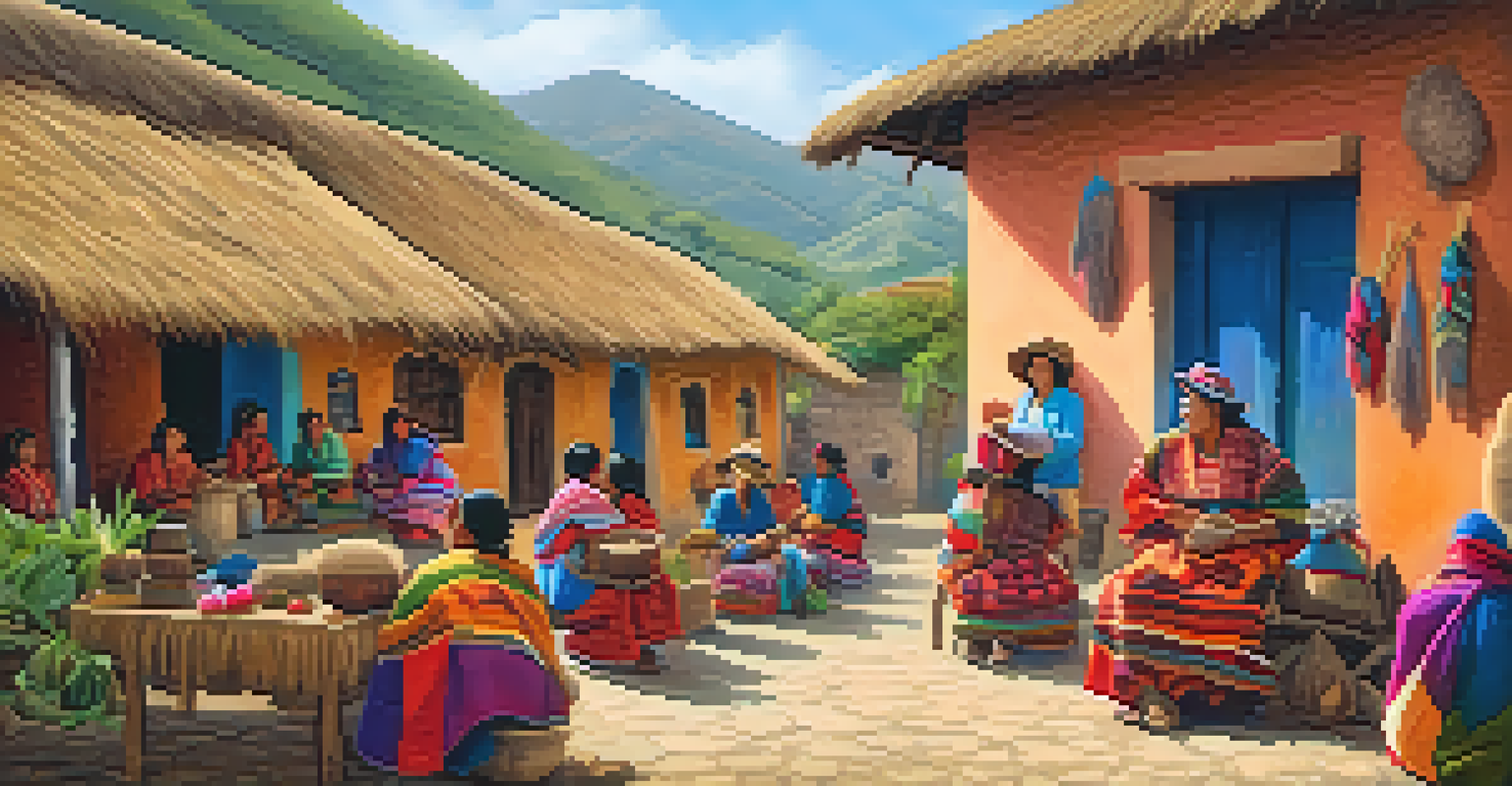Camping in Peru's National Parks: Tips for an Unforgettable Trip

Choosing the Right National Park for Your Adventure
Peru is home to a diverse range of national parks, each offering unique landscapes and experiences. If you're looking for lush forests, consider exploring Manu National Park, where wildlife thrives in its biodiverse environment. Alternatively, if stunning mountain views are your goal, Torres del Paine National Park is a must-visit, showcasing breathtaking granite peaks.
In every walk with nature one receives far more than he seeks.
When selecting a park, think about your interests—hiking, wildlife watching, or cultural experiences. Each park has its own vibe and set of activities, so do a bit of research to find the perfect match. For instance, Huascarán National Park is ideal for those seeking high-altitude adventures, while Ichigkat Muja offers insight into local indigenous cultures.
Make sure to consider accessibility and facilities available in each park. Some parks are more developed with amenities, while others may require a more rugged approach. Knowing these details can greatly influence your camping experience.
Best Time of Year to Camp in Peru
Timing your camping trip is crucial, as Peru's climate varies significantly by region. The dry season, from May to September, is generally the best time for outdoor activities, with clear skies and pleasant temperatures. However, this is also peak tourist season, so expect larger crowds in popular parks.

If you prefer a quieter experience, consider visiting during the shoulder seasons of April or October. While you might encounter some rain, the landscapes are often more vibrant and lush. Just remember to pack accordingly, as conditions can change rapidly in the mountains.
Choose the Right National Park
Pick a national park in Peru that aligns with your interests, whether it's hiking, wildlife, or cultural experiences.
Always check local weather forecasts and park conditions before setting out. Being adaptable and prepared for unexpected changes will ensure you have a safe and enjoyable adventure.
Essential Gear for Camping in Peru's Parks
Packing the right gear is essential for a successful camping trip in Peru. Start with a quality tent that can withstand the local weather conditions, especially in mountainous areas where temperatures can dip at night. Don't forget a sleeping bag suitable for colder climates, as well as a sleeping pad for extra comfort.
The Earth has music for those who listen.
Also, consider layering your clothing. The weather can change from sunny to chilly in a matter of hours, so breathable, moisture-wicking fabrics will serve you well. A good pair of hiking boots is a must, as trails can vary from easy walks to challenging treks.
Lastly, make sure to bring a reliable backpack for day hikes and essential cooking gear if you're planning to prepare your meals. Remember, the more prepared you are, the more you'll enjoy your time outdoors.
Understanding Park Regulations and Safety
Before heading out, familiarize yourself with the specific regulations of the national park you plan to visit. Each park has its own set of rules regarding camping, fires, and wildlife interactions. Abiding by these regulations not only keeps you safe but also protects the natural environment.
Safety should always be a priority when exploring remote areas. Inform someone of your itinerary and expected return time, and carry a map or GPS device. Having a first aid kit handy can also be a lifesaver in case of minor injuries or emergencies.
Pack Smart for Camping Success
Bringing the right gear, including quality tents and layered clothing, is crucial for a comfortable camping experience.
Lastly, be aware of wildlife. While encounters can be thrilling, it's essential to respect their space and not feed them. This ensures both your safety and the animals’ well-being.
Cooking and Meal Planning for Your Trip
Planning meals ahead of time can make your camping experience more enjoyable. Opt for lightweight, non-perishable foods like nuts, dried fruits, and energy bars for quick snacks. For main meals, consider items like dehydrated meals that require only hot water to prepare, saving you time and effort.
Cooking on a camp stove or a portable grill can enhance your camping experience. Just ensure you have all necessary utensils and fuel. Preparing meals in a group can also be a fun way to bond with fellow campers while sharing the workload.
Don't forget to pack out all trash and leftover food to minimize your impact on the environment. Leave no trace principles are crucial in preserving the beauty of Peru's national parks for future visitors.
Engaging with Local Culture and Communities
Camping in Peru not only exposes you to stunning natural beauty but also offers opportunities to engage with local cultures. Take the time to learn about the indigenous communities that inhabit these regions, their traditions, and their relationship with the land. This can enrich your experience and deepen your appreciation for the environment.
Consider participating in community-led tours or workshops while you're in the area. These activities often provide authentic cultural insights and allow you to contribute directly to local economies. Plus, it’s a great way to meet new people and create lasting memories.
Respect Local Culture and Nature
Engaging with local communities and following park regulations helps preserve the environment and enrich your experience.
Respecting local customs and traditions is essential. Be mindful of cultural sensitivities, especially when photographing people or sacred sites. This respect fosters goodwill and keeps the spirit of adventure positive.
Capturing Your Camping Experience in Peru
Documenting your camping trip can be a rewarding experience. Whether through photography, journaling, or video, capturing your adventures allows you to relive them long after the trip ends. Remember to snap photos of breathtaking landscapes, local wildlife, and moments with fellow campers.
Consider carrying a lightweight camera or using your smartphone, but be mindful of your battery life, especially in remote areas. Solar chargers can be a great investment for longer stays. Additionally, make a habit of jotting down your thoughts and experiences in a travel journal each evening.

Sharing your adventures on social media can inspire others to explore these beautiful parks. Just remember to emphasize responsible camping and the importance of preserving nature, encouraging your followers to respect these stunning environments.